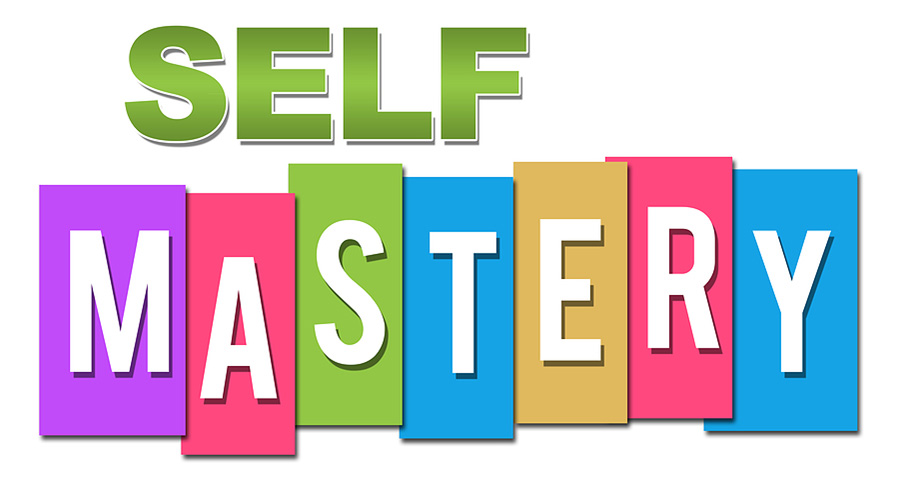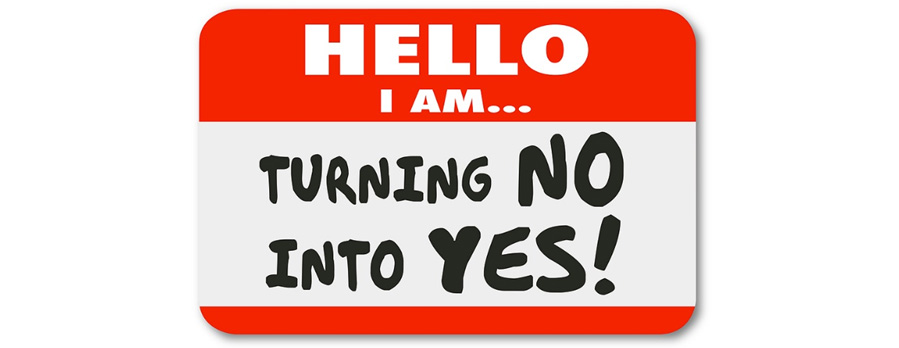👥 250,000 Trained
🏆 9 x Award Winners
⭐ 96% Review Rating
📈 24 Years of Proven Results
Written by Sean McPheat | 

What does it take to be a successful sales professional? It’s a question we get asked a lot on our Sales Training. Our answer is always the same. It’s a case of having the skill and the will to succeed. Having and mastering key sales skills is important but if you’re not motivated or have a bad attitude then it will be a waste. On the flip side, if you have someone who is extremely motivated but doesn’t know what to do then you’ll never make your sales target.
Let’s look at the habits, the sales skills and the approach needed to be a successful modern-day sales professional and then we’ll list 100 top sales skills and ways that you can improve.

It’s impossible to sell to everyone you meet – not all will have the need or want for your products and services right now. Concentrate on those who are most likely to need your services and spend less time on those who don’t. Don’t let your pipeline get blocked with prospects who keep you waiting too long or cause more trouble than they are worth.
To do:
Get away from the idea that you are selling products or services. Apprentice and recognise the fact that you are solving prospects’ problems. Many of our prospects will not be aware that they have problems until we show them how life for them could be like if they made the decision to go with us. And you can motivate your prospect to choose you over your competition when they discover that you can do it better than everyone else.
To do:
On our Selling Skills Training we find many people who believe they are very good communicators, but this is a very broad area. They can master one area only to fall on another.
The 3 areas with the biggest pay off include the ability to ask quality questions, listening and rapport building. If you master those 3 areas, you will be a top sales professional.
To do:
Sounding good on the telephone is a given. I want to focus on voicemails and getting through gatekeepers. You would cringe if you could hear some of the voicemails we get left at our office by salespeople. At worst, they are dire and create a terrible impression for their company and services; at best, they are not well-prepared. Getting your voicemails returned requires a unique approach so you sound different to everyone else as does identifying and getting past those gatekeepers.
To do:
When you get to the point where you can present or talk about your solutions, remember that they have recognised they have a problem, so here’s your chance to impress. Don’t talk on and on about your products and services. Instead, talk about how their results will change as they reap the benefits of using them.
Make the presentation come alive with stories, anecdotes, testimonials, and results from customers who have used you before. Here’s why using sale case studies are important.
Ensure that you cover the logical and emotional reasons of using you.
To do:
We are getting more and more requests for Social Selling Training on how to use LinkedIn in the right way to prospect and sell. Ensure that you’ve got an up-to-date profile with a professional photo and that all your career history and summaries are relevant. Your prospects and customers will more than likely check you out on LinkedIn so make sure your profile gives them the impression you want them to see.
To do:
I’m always surprised when I hear that the vast majority of salespeople have not attended any formal Sales Negotiation Training. Negotiation is all about agreeing the terms of the deal and they can surface as early as at the sales objection phase. Negotiating is all about giving to get and focusing on an outcome that is a win for all parties.
It’s easy to close a deal if you discount all the time and the buyer takes the shirt off your back. That’s why I recommend improving your negotiation skills to protect your margins and your integrity.
To do:
Some sales cycles can be a long, drawn-out process and you will need to keep your cool as well as your nerve at times as the customer changes their mind and as their circumstances change. It’s important to learn customer care skills, empathy and sometimes even complaint handling.
To do:

So far, I have touched on the skills you need to become a top sales professional. I’d like to look at the qualities you will need to demonstrate. This is more of a mindset and approach to your craft rather than any hard or soft skills.
You need a sense of growth in everything you do. When you develop your skills over time, you become a more valuable person in sales and in general.
It requires you to make time to improve and invest in your future career. Only then will you see rewards for the time you put into your work. If you think that the road paved with gold will miraculously build itself for you, you’ll be sorely disappointed.
The only time success comes before work is in the dictionary.
This quality allows you to ask the better and deeper questions, to become the source of knowledge and wisdom and highlight the ways a company can improve. Curiosity reduces the tendency to judge and builds an attitude of inquisitiveness rather than one of criticism. It makes you want to dig deeper and find out the reason ‘why’.
Instead of simply condemning a decision that a prospect makes, a curious salesperson will develop a keen eye and keep a watch on what would make someone change their mind or create opportunities for growth. A curious mindset is a great quality to engender and develop.
Rather than viewing yourself as a salesperson you should look at yourself as a trusted advisor. Someone your customer can call for advice and guidance on all matter of topics. This means getting under the skin of the company and really understanding what is going on. It’s much more than any Account Management Training can cover. This is all about becoming an extension to your customer’s business.
The only constant in sales will be change, so you need to develop the mastery of dealing with change and its incumbent results. Learn how to become more resilient and how to deal with ambiguity and uncertainty.
Agility can be defined as ‘the power to move quickly and easily’.
With an agile mindset, a person can respond quicker to situations and challenges that come their way. How do we define an agile mindset?
Leanne Howard, an Agile Practices Consultant, defines five components that make an agile mindset:
Those ten skills and qualities will help you become someone who will be welcome in your clients’ businesses.
If you’re looking to take your game to the next level, try our 2-day Sales Skills Training course. It will cover the concepts learned in this blog in greater detail and in turn will help you to close more sales.

We’ve covered a lot in this guide to answer the question; what makes a successful salesperson and overall, they can be put into 4 main categories:
• Attitude
• Skills
• Knowledge
• Hard work
The best salespeople expect to succeed. They always see the glass as being half full, not half empty. They have excellent communication skills and really care about their clients.
They see selling as a problem-solving process where their role is to help their customers and build solid, long-term relationships. They know about their products and their market.
Also, they work hard, especially when times are tough.
I was challenged to come up with the 100 ways to improve sales results and here they are.
You will notice they are all simple, practical, and sensible. Sales is not Rocket Science.
The basic principles are what matter and like the top sports people, the high performers in sales are successful because they understand and put into practice, the basic skills.
Ready? Here you go.

Attitude & Mindset Skills
1. Begin with your attitude. The best salespeople think positively. Beware of negative thoughts. Thoughts like, “I could never do that” and “What if I fail?” can seriously impact the way you behave
2. When top salespeople catch themselves thinking a pessimistic thought about their situation, they evaluate the evidence. What are the facts–not the fears—but the facts?
3. The best salespeople are aware of the importance of the image they present to clients. Invest in the way you look. You don’t want to be perceived as just another rep!
4. Online research. Find out about your client’s future. Keep up with technology.
5. Don’t use high pressure selling techniques on your customers. They don’t work. Treat your customers as you would want to be treated.
6. Develop a style of selling that is relaxed and friendly, while still being professional
7. Never sell anything to a customer that they don’t need, or can’t afford

Goals, Plans & Targets
8. Set yourself goals. The most successful salespeople have clear goals and can tell you what they are
9. Set SMART goals. Specific, measurable, achievable, realistic and timebound
10. Put together a sales plan.
11. Discuss your sales plan with your manager. Use your manager as a resource
12. What is happening in your market? Set yourself short, medium, and long-term goals that reflect the way the market is changing
13. When you write your sales plan begin by defining your objectives. What do you want to achieve over a defined period? Write your objectives down and make sure they are SMART

Self-Development & Your Career
14. Read a serious newspaper (online or offline) at least once a week. Be aware of current affairs so you can have a sensible conversation on any topic. Read blogs and publications that can keep you up to date. This was one of the best bits of advice I was given as a young salesperson
15. Read books on selling. Listen to sales podcasts on selling and watch videos on selling. Use inspirational sales quotes to keep you going when times get tough. Invest in your own long-term development
16. Find out the long term aims and goals of your company. Where do you see yourself going in the next 3, 5 10 years? Set yourself a career plan
17. Find a mentor or sales coach. This is someone who is already successful, either in your organisation, or elsewhere. This is someone you can talk to and who can give you the benefit of their experience
18. Solve problems in your own organisation. Most people just sit back and complain. Come up with solutions. You never know, they may promote you!
19. Get the right balance between work and the rest of your life. Take care of your health and fitness
20. Learn new skills that may not directly contribute to your job. Learn a language or attend a night class. The brain is a muscle that needs to be kept active
21. Network – online and offline. Build your LinkedIn network and become a thought leader by contributing regular content
22. Think. Set aside some thinking time to review progress and the direction you are going in. Most people say they are too busy, but it is a useful exercise
23. Find someone who is already successful and mirror what they do

Prospecting
24. Plan to hit your target. Break your overall target down so that is becomes more achievable. If you have a target of £250,000 a quarter this makes no sense. If, by breaking it down you estimate you need to make 10 sales visits a week, this becomes more achievable
25. Manage your pipeline. We only convert a percentage of potential customers into actual customers. Plan prospecting activity into your schedule. Keep topping up the pipeline
26. Analyse your customer profile. Who buys from me? Where are they based? What is the best way to identify and contact potential customers?
27. Put together your hit list of prospective customers; targeted at people most likely to buy your products or services. Keep the list manageable. If you are going to contact 50 people a week every 4 weeks, you need 200 prospects. Quality is better than quantity
28. Keep targeting them. Most people don’t buy first time, especially if you are selling the idea of an appointment to meet you.
29. Set aside time for prospecting. It works best if it is, say, every Tuesday morning, or whatever day you prefer. The key is making it every week without fail. This is what the top salespeople do
30. If you are phoning your prospects write yourself a script and practise it with colleagues. When preparing a script always follow a statement with a question. This keeps you in control. “We specialise in sales and management training. Is this something you have purchased in the past?”
31. Disqualify poor quality prospects. This keeps your prospect list fresh and full of the kind of people that you really should be doing business with
32. Understand that prospecting is a numbers game. Set yourself targets for the number of people you contact each week and stick to it
33. Sending an email upfront is a great way of prospecting. It takes less time and can be very effective. Just make sure that you use a catchy sales email subject line that gets the email opened. Send information, or free stuff which will add value even if they don’t buy. When they are ready to buy you will be at the top of their list
34. Keep accurate records of your prospecting. This is what the top salespeople do
35. Remember the Pareto Principle. 80% of our business comes from 20% of our customer base. Focus first on repeat business. How to keep it and grow it. Most lost business happens because of neglect. Build into your plan a strategy for your existing customers

Know Your Numbers
36. Understand your key ratios. This is about using historical data to plan forward. Measure everything. If your target is to book 5 appointments and you know that, historically, you have had to make an average of 6 telephone calls to get an appointment in the past, you need to prepare 30 prospects. The ratios don’t always work every time, but do work overtime
37. Top salespeople measure everything. If it can’t be measured it can’t be managed.
38. Lead times. Understand that sales activity today will generally lead to results in weeks or even months ahead. Even when you are doing well you need to be planning for future results. If you want more information on improving lead times check out this guide on sales velocity
39. Keep reviewing your market. What is changing? What will the market look like in 3 years’ time? What can you be doing now to stay ahead of the game?
40. What resources are available to you to help you sell more? This could be anything productivity apps and software, to an opportunity to receive some training, or a sales manager who has lots of experience that you can tap into. Seek out opportunities to help you sell more

Telesales & Cold Calling
41. If you are booking appointments by phone, begin by putting together a good telephone script. If you’re knocking on doors, then check out these door to door sales scripts
42. If you are cold calling, why not try a 3-stage process that professional telemarketing companies use. Phone call-email-phone call. This approach pre warns the potential customer they are about to receive information and checks out that they are the right contact. Information is then emailed with a follow up phone call to book the appointment
43. When you call someone for the first time think about how you are going to introduce yourself.
44. Speak slower. We say our names 3 times faster than other bits of information. If you sound relaxed it will relax your customer
45. Sell the appointment. Don’t say that you are in the area next week and would like to pop in for half an hour. These people are busy. What have you got to talk about? Is it worth 30 minutes of their valuable time? What’s in it for them?
46. People will naturally try to say no unless you have struck lucky and rung at exactly the right time. Give them time to explore the issues you want to discuss. Minimise the risk of agreeing to an appointment but sell the benefits to them.
47. Deal with objections in a positive may. Most people will say no. That’s a fact. Look for the longer term. Send information. Agree a call back. Don’t beat them up to gain a short-term advantage. If they want to think, that’s okay. Just make sure you agree the next steps once they have done their thinking
48. Practice dealing with the most common objections with your colleagues. There are relatively few objections. Two things to remember. Don’t interrupt and don’t attack your customer’s belief system.
49. For more information on dealing with objections go to our blog. Here’s an article on objection handling
50. If you are sending out information don’t leave it too long before following it up. Follow up once you feel they have had a chance to read the information. Don’t leave it 3 weeks!
51. When asking for the appointment, ask for a specific time and day. This way you are in control of your diary. Go for an early appointment. This frees up time in your diary for later in the day
52. Confirm the appointment by e-mail. Remind them about the reason for the appointment and send an agenda for the meeting if appropriate

Sales Meetings
53. Once you have confirmed the appointment begin your planning and preparation for the meeting. Things you need to consider are your objectives, your agenda, the questions you need to ask, visual aids and finally your attitude.
54. Set objectives for the meeting that is ambitious, but realistic. Have more than one objective. “If I don’t make a sale, what else could I achieve from the meeting?”
55. Prepare your questions in advance. Areas you need to cover, especially at a first meeting are: contact (the person I am meeting with), organisation (their business), decision making processes (how they make decisions, who gets involved and their timescales), current suppliers (who they buy from now), competition (who else are they talking to?), problems (what issues are they facing at the moment?), needs (what are they looking for from us?) finance (what financial issues are appropriate?)
56. Building rapport. It is necessary to have some social time before we get down to business. The amount of time we spend here should be led by the customer. Different cultures have different ideas about this subject.
57. Agenda. Once you have settled down reaffirm the purpose
Updated on: 3 December, 2021
Related Articles

Search For More
